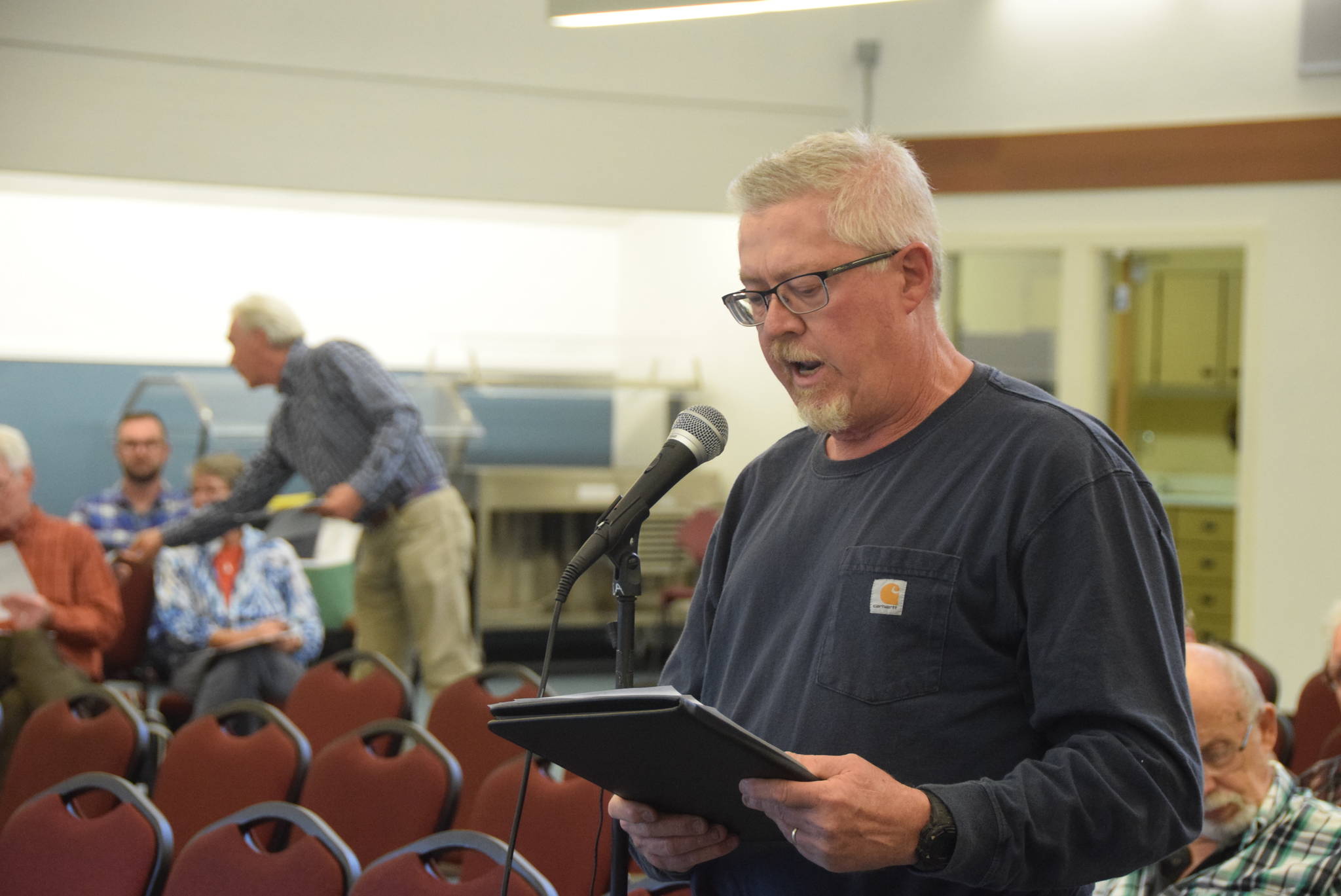Nikiski residents had a chance Wednesday night to speak their mind regarding a potential natural gas pipeline that could end up in their backyard.
During a public comment session at the Nikiski Community Recreation Center, over a dozen people voiced their support for the Alaska LNG Project, as well as their concerns about its impact on the community and the environment.
The LNG project is a proposal to extract natural gas from the North Slope that will be transported 800 miles to a liquefaction facility in Nikiski and exported internationally. The draft environmental impact statement (EIS) for the project was released in June of this year by the Federal Energy Regulatory Commission (FERC). The release of the draft EIS included establishing a 90-day public comment period to allow the public to weigh in on the findings.
Most of the people who spoke at the public meeting were residents of Boulder Point, a relatively remote neighborhood north of Nikiski. The currently proposed route for the pipeline as laid out in the draft EIS would travel through Boulder Point as it heads south to the liquefaction facility, but there are two other alternative routes for the pipeline that are being considered.
Debbie McKay of Boulder Point was primarily concerned with the impact that the pipeline would have on the wildlife in the area.
“Disturbing this habitat will have a huge impact for generations to come, especially on the black bears … who, every fall, rely on the devil’s club in this area to fatten up for their winter hibernation,” McKay said.
Bill Bookout, another Boulder Point resident, has property immediately adjacent to where the proposed pipeline would make landfall. Bookout said that while he and others in the neighborhood support responsible energy development, he is concerned that the impacts to the area are being minimized in the draft EIS.
“I would suggest to you to give serious consideration to the alternative that has been proposed, known as the Western Alternative,” Bookout said. “It seems to me that this proposed alternative can accomplish all objectives for stakeholders in the area while minimizing the impact — which is significant and permanent — to the residents of the Boulder Point area.”
Bookout and most of the other Boulder Point residents who spoke Wednesday night referenced the Western Alternative, which is an alternative route for the pipeline laid out in the draft EIS that makes landfall just south of Boulder Point and then follows the proposed route to the liquefaction facilities.
According to the draft EIS, the Western Alternative would involve an additional 1.7 miles of pipeline in Critical beluga whale habitat in the Cook Inlet but would reduce the amount of pipeline on land by about 3.8 miles, affecting 69 fewer acres of devil’s club habitat.
“We conclude that the West Alternative is feasible and would provide some advantages compared to the proposed route,” the draft EIS states. “However, it would not provide a significant environmental advantage over the proposed route.”
Residents of Boulder Point spoke on the impacts on the area that cannot be resolved through financial compensation, such as fishing sites that would be made unusable by families and additional noise and traffic through the area as part of construction and operation.
Linda Huhndorf of Boulder Point added another concern to the list related to the integrity of the pipeline itself: boulders.
“Boulder point: it’s called that for a reason. There are lots of boulders out there, and that’s where the proposed line is going to go?” Huhndorf said. “Those boulders are not going to stay put, they move with the tide, and they’re going to impair and endanger any pipeline that’s out there … this is not a place to put a gas pipeline.”
Comments on the LNG pipeline draft environmental impact statement can be submitted electronically or by mail until Oct. 3. Representatives from FERC are visiting Nikiski and other areas of Alaska that would be impacted by the construction of this project to allow residents to submit their comments in person.

